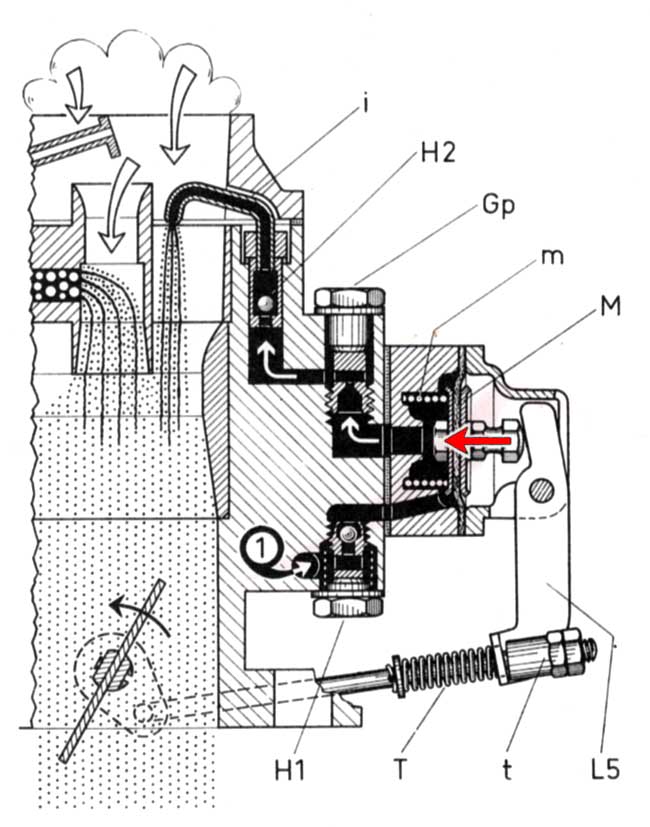



Acceleration A mechanically actuated diaphragm-type accelerating pump is employed. The pump receives fuel directly from the float chamber. When the pump is at rest,. the diaphragm (M) is kept outwards by the diaphragm spring (m). As the throttle valve opens, actuating motion is transmitted to the pump by the pump rod (T) and pump lever (L5), pushing the diaphragm inward against the fuel and forcing it to pass through the pump jet (Gp) and the calibrated injection nozzle (i) into the venturi, enriching the fuel/ air mixture and resulting in smooth engine response at acceleration. The check valve (Hl), in the pump inlet, prevents the fuel from backing up into the float chamber; a second check valve (HZ), at the base of the injection nozzle, prevents air from entering the pump through the injection nozzle when the pump is on the inlet stroke. The amount of fuel dispensed by the pump on its pressure stroke at time of acceleration is predetermined by the length of the pump stroke; the stroke can be adjusted through the pump adjustment (t). The pump jet and the calibrated injection nozzle control only the duration of injection. |

